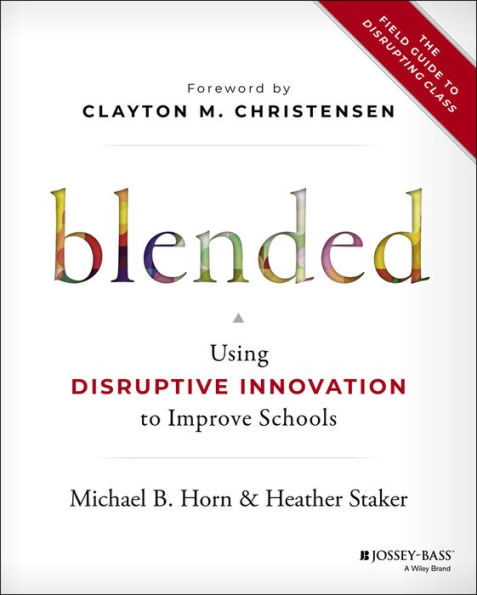Table of Contents
List of Videos xi
Foreword xvClayton M. Christensen
Acknowledgments xxi
About the Authors xxv
Introduction 1
Pattern of Disruptive Innovation 2
Disruptive Innovation and Online Learning 3
The Factory-Based Model of Schooling 5
Student-Centered Learning 8
Why Schools Are Reaching a Tipping Point 11
Building a Field of Experts 17
What You’ll Find in This Book 18
Part 1 Understanding 29
1 What is Blended Learning? 31
Online Learning’s Upward March 32
What Blended Learning Is—and Isn’t 34
Models of Blended Learning 37
Mixing of Blended Models 52
To Sum Up 53
Appendix 1.1: Discussion of Key Terms 54
Appendix 1.2: K–12 Blended-Learning Taxonomy 55
2 Are All Classrooms Going to Blend? 67
The Theory of Hybrids 69
Is Blended Learning Disruptive? 71
Hybrid Models of Blended Learning 73
Disruptive Models of Blended Learning 76
Foreseeing the K–12 Education Revolution 77
What is to Become of Schools? 79
To Sum Up 85
Part 2 Mobilizing 93
3 Start with the Rallying Cry 95
The Alternative to Cramming 98
Defining the Problem or Stating the Goal 99
Should Leaders Focus on Sustaining or Disruptive Rallying Cries? 103
How to Identify Core Opportunities 104
How to Identify Nonconsumption Opportunities 105
Threats versus Opportunities 107
To Sum Up 108
4 Organize to Innovate 113
A Framework for Team Design 114
Applying the Team Framework to Schools 120
Using Multiple Types of Teams 129
The Cost of Getting It Wrong 130
To Sum Up 131
Part 3 Designing 135
5 Motivate the Students 137
The Importance of Student Willingness to Learn 138
The Jobs-to-Be-Done Theory 139
Students’ Jobs to Be Done 143
The Architecture of a Job 145
Fulfilling the Job for Students 146
What to Integrate, and How 152
Blended Learning’s Role in Fulfilling Student Jobs 155
The Danger of Asking Students to Change Jobs 156
To Sum Up 157
6 Elevate Teaching 169
Designing the Teacher Role from the Student Perspective 170
Designing the Teacher Role from the Teacher Perspective 176
Doing Right for Students and Teachers 181
To Sum Up 182
7 Design the Virtual and Physical Setup 189
Product Architecture and Interfaces 190
The Shift in Personal Computer Architecture 192
The Shift toward Modularity in Education 194
Integrated versus Modular Online Content 195
Integrated versus Modular Operating Systems 203
Integrated versus Modular Physical Space 205
Aligning Your Strategy to Your Circumstances 208
To Sum Up 209
Appendix 7.1: Snapshot of Online Content in Use Among K–12
Blended Programs 210
8 Choose the Model 219
Match the Model to the Type of Problem 221
Match the Model to the Type of Team 224
Match the Model to the Desired Student Experience 226
Match the Model to the Role of the Teacher 229
Match the Model to the Physical Space 232
Match the Model to the Availability of Internet-Enabled Devices 234
Prioritizing Options and Making the Selection 237
Moving toward Multiple Models 237
To Sum Up 240
Appendix 8.1: Which Blended-Learning Model Matches Your Circumstances Best? 241
Part 4 Implementing 247
9 Create the Culture 249
What is Culture? 250
The Power of Culture for Children 252
The Power of Culture in Schools 253
How to Shape Culture 254
The Power of Culture in Blended-Learning Implementations 256
It’s Not Too Late 260
To Sum Up 261
10 Discover Your Way to Success 265
Discovery-Driven Planning 266
Start with the Outcomes 268
Create an Assumptions Checklist 269
Implement a Plan—To Learn More 273
Should We Go Forward, Change, or Shelve the Plan? 276
To Sum Up 277
11 Conclusion 281
Implement over Time 282
Blended Learning is a Team Sport 283
Understand, Mobilize, Design, Implement 285
Appendix: Questions for Discussion 289
Index 295







